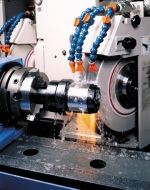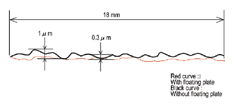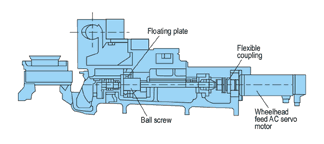Floating Plate Takes The Run . . . Out
Understanding the critical role of the grinding operation in the shop's manufacturing process, grinding machine makers continuously apply the best technical knowledge available to their machines. Often these are little innovations that help reduce the opportunities for inaccuracy to seep into the process. A typical example of such innovation is found in this manufacturer's line of grinding machine tools.
Share





In most of the metalworking steps that precede the precision grinding operation, there is some room in the process for a little extra stock to be left. It’s the grinding operation where the final size and finish are imparted. Basically, precision grinding leaves no room for error. The operation either hits the part specification tolerance or the whole series of manufacturing steps must begin again.
Understanding the critical role of the grinding operation in the shop’s manufacturing process, grinding machine makers continuously apply the best technical knowledge available to their machines. Often these are little innovations that help reduce the opportunities for inaccuracy to seep into the process. A typical example of such innovation is found in the Toyoda Machinery USA (Wixom, Michigan) line for grinding machine tools.
Most grinders actuate the machine tool’s axes using ballscrews. Precisely manufactured, ballscrews are a well-known and reliable means of moving machine tool components. Application of powerful CNC and fast feedback servo technology make the ballscrew accurately responsive to very small motion commands.
In OD grinding there are two axes that come into play. The Z axis is generally the reciprocating table that carries the workhead, footstock and workpiece. The machine’s X-axis moves the wheelhead, or heads, into the work zone. In many applications these two axes are used in concert to profile grind the workpiece.
The ballscrews that actuate these axes are engineered to be stiff and manufactured to be straight. In reality though, no ballscrew is infinitely stiff or perfectly straight. These deviations from perfect are runout. An exaggerated analogy of ballscrew runout is rolling a bent cue stick on a pool table.
In operation there are two primary sources for ballscrew runout. Dynamic runout, which is also called “wind-up,” is caused when a ballscrew deflects slightly as it overcomes inertia. Static runout is the ballscrew’s deviation from perfectly straight.
To compensate for these realities, Toyoda uses a patented device they call a floating plate. It’s designed to prevent transfer of ballscrew runout to the Z-axis table or X-axis wheelhead by absorbing the runout.
The mechanism is mounted under the slide and on the base of the machine. Both X and Z-axis ballscrews are supported. Instead of coupling the ballscrew directly to the machine’s moving element through a rigidly mounted ballnut, the ballscrew is connected to the table or wheelhead using a floating plate.
Imperceptible movements between the ballscrew and the floating plate compensate for misalignment that could result when the grinding wheel makes contact with the part. The design of this plate allows the screw to oscillate in a radial direction, which prevents any runout from affecting the moving components. Maintaining tolerances and eliminating bind between the moving element and the ballscrew helps ensure precision grinding.
Granted, the effects that the floating plate neutralizes are generally very small. But in precision grinding, inaccuracy is an accumulation of very small effects. Eliminating as many as possible will result in a more precise and predictable grinding process. And that, after all, is the goal.—GCK
Related Content
Orthopedic Event Discusses Manufacturing Strategies
At the seminar, representatives from multiple companies discussed strategies for making orthopedic devices accurately and efficiently.
Read More5 Tips for Running a Profitable Aerospace Shop
Aerospace machining is a demanding and competitive sector of manufacturing, but this shop demonstrates five ways to find aerospace success.
Read MoreThe Future of High Feed Milling in Modern Manufacturing
Achieve higher metal removal rates and enhanced predictability with ISCAR’s advanced high-feed milling tools — optimized for today’s competitive global market.
Read MoreQuick-Change Tool Heads Reduce Setup on Swiss-Type Turning Centers
This new quick-change tooling system enables shops to get more production from their Swiss turning centers through reduced tool setup time and matches the performance of a solid tool.
Read MoreRead Next
5 Rules of Thumb for Buying CNC Machine Tools
Use these tips to carefully plan your machine tool purchases and to avoid regretting your decision later.
Read MoreRegistration Now Open for the Precision Machining Technology Show (PMTS) 2025
The precision machining industry’s premier event returns to Cleveland, OH, April 1-3.
Read MoreBuilding Out a Foundation for Student Machinists
Autodesk and Haas have teamed up to produce an introductory course for students that covers the basics of CAD, CAM and CNC while providing them with a portfolio part.
Read More
































